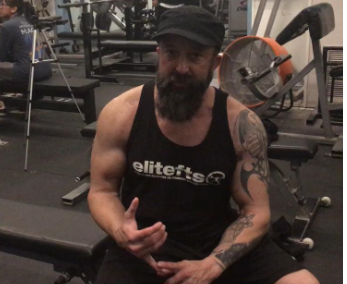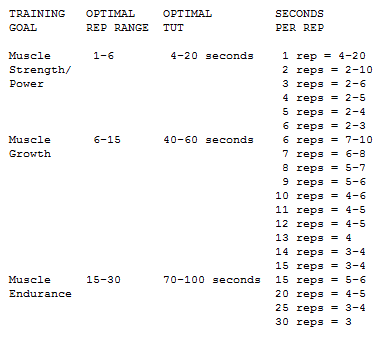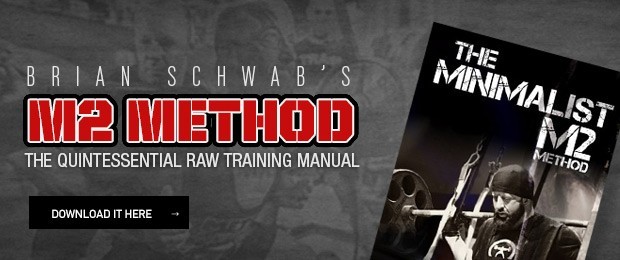
I’ve been asked numerous times how to make adjustments to my Minimalist/M2 Training Method to accommodate for the slower recovery time and joint pain of aging lifters. My response, up to this point, has always been to drop the percentages on the main movements (if there’s no upcoming meet planned) and/or the number of sets and reps on the accessory movements.
I understand their concern. Due to my autoimmune issues, and I’m sure aging too, my joints definitely hurt more than they used to.
If the weight’s too heavy my joints hurt.
If the reps are too high my joints hurt.
If I try to move light weights too fast, my joints hurt.
It’s frustrating, especially considering how much weight I used to lift.
So how do you keep making improvements if you can’t increase the weight or reps? What’s the one factor that we don’t often think about? How can you make lighter weights be more beneficial to your training? Well, I’ll tell you. You can slow down the reps to create greater time under tension.
Mike Mentzer and Dorian Yates were two of the bodybuilders I admired due to their unique training methods. Even before I knew the details of their methods, I already felt that I benefited the most from completing just two max sets to failure. If you work hard enough in two sets, or often even one, then you won’t have the strength to complete any more effectively. This is what my M2 Method is based off of (as well as a gradually increasing ROM).
As far as the speed of reps I’ve always recommended that people perform them at what I referred to as “the speed of life.” So, not too slow or too fast. Usually two seconds for the eccentric and one second for the concentric is what I recommended. Controlled, but not so slow that you’ll fatigue with lighter weight than necessary. My thought was always why would you want to train your body to move slower? Now I’m starting to understand why.
I was talking to long time Orlando Barbell member Chris Harris (and the father of my youngest client Dean) about different bodybuilding training methods and we started talking about Mike Mentzer. Then he sent me this video:
It wasn’t until I watched this that I realized how slow Mentzer recommended performing the reps.
What is HIT? (not to be confused with HIIT cardio training)
"High-intensity training (HIT) is a form of strength training popularized in the 1970s by Arthur Jones, the founder of Nautilus. The training focuses on performing quality weight training repetitions to the point of momentary muscular failure. The training takes into account the number of repetitions, the amount of weight, and the amount of time the muscle is exposed to tension in order to maximize the amount of muscle fiber recruitment."
Here are some of the benefits of HIT strength training:
- Lighter weights are used
- Less joint stress
- Greater ROM
- More muscle fiber recruitment due to the time under tension
- Less chance of injury
- Less training time
How do you train HIT?
Each rep should take 6 to 8 seconds, so 3 to 4 for the eccentric and 3 to 4 for the concentric.
Find a weight where you can only do 6 to 8 reps at this pace.
You only need one or two exercises per muscle group.
Train not just to failure, but past the point of failure (at least this is how I do it and feel that I benefit the most). To do this correctly you’ll need a decent spotter and it’s easier to perform this on machines since there’s less chance of injury. My poor wife, Trinity, has been recruited by me for most of this and has been doing well, except when she added more resistance, instead of assisting, on the Cybex tricep extension. She’s got it pretty well figured out now though.
Here’s an example with Flat DB Press, although as I said, machines would be a safer option:
Here’s a chart describing the ideal TUT (Time Under Tension) for each rep range:

Here’s how I’ve been combining the HIT training with my Powerlifting routine. I plan the main movement following the gradually increasing ROM of my M2 Method, then use the HIT training method for all of the accessory work. I wouldn’t recommend the HIT training method for your main movements since it would suck, plus not be as beneficial for increasing strength, but for the accessory work it’s definitely a good option.
Day 1:
Deadlifts following my M2 Training Method.
Leg Press- 1 warm up, 2 working sets
Leg Curl- 1 warm up, 2 working sets
Cybex Ab Crunch- 1 warm up, 2 working sets
Day 2:
This would be Max effort Bench day, but since I’m still recovering from my shoulder replacement surgery, I basically just do chest and triceps. Here’s an example routine:
Flat DB Press- 1 to 2 warms ups and 2 working sets
Cybex Chest Press- 1 warm up, 2 working sets
Cable Pressdowns- 2 working sets
Cybex Tricep Exensions- 2 working sets
Day 3:
Back and Biceps:
Wide Cable Pulldowns- 1 to 2 warm ups and 2 working sets
Cybex Rows- 1 warm up, 2 working sets
DB Bicep Curls- 2 working sets
Cybex Curls- 2 working sets
Day 4:
Squats following my M2 Method.
Leg Press- 1 warm up, 2 working sets
Leg Curl- 1 warm up, 2 working sets
Cybex Ab Crunch- 1 warm up, 2 working sets
Day 5:
Upper Body:
Decline DB Press – 1 warm up, 2 working sets
Cable Rows- 1 warm up, 2 working sets
DB Lateral Raises- 2 working sets
Cybex Rear Delt- 2 working sets
Cable Curls- 2 working sets
Cable Pressdowns- 2 working sets
I train each muscle group twice a week and still believe muscle groups take 48 hours to recover from a strength training session (unlike many of the popular routines today). I only like to train during the week anymore and like to have a life on the weekends (especially after spending all week in the gym) so I take them off.
Each HIT training session only takes around 20 to 30 minutes. I’ve been more sore from this than I have been from doing my regular accessory work in years and have already put about 5 lbs back on in the last month (it’s very, very difficult for me to put quality weight on).
I’m not saying that everyone should follow a HIT training routine. New lifters would probably benefit more from the numerous other programs out there and athletes should still try to move weight quickly, but aging Powerlifters, lifters with joint pain, or lifters who just who need a change definitely could. Give it a try if this applies to you. I think you’ll be surprised at how beneficial it can be. I’m not even sure how long I’ll follow this training method, but for now it’s a welcome change and my joints are thankful for it.
Stay tuned. There’s definitely more info on this to come.
https://en.wikipedia.org/wiki/High-intensity_training
Time Under Tension: The Scientifically Engineered Set-Timing Technique









